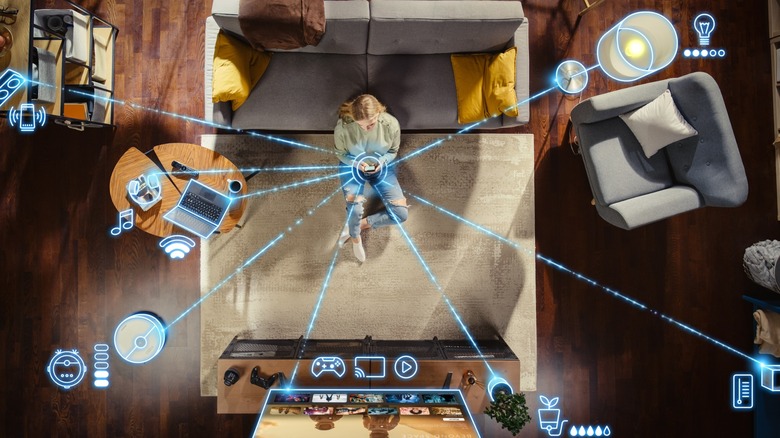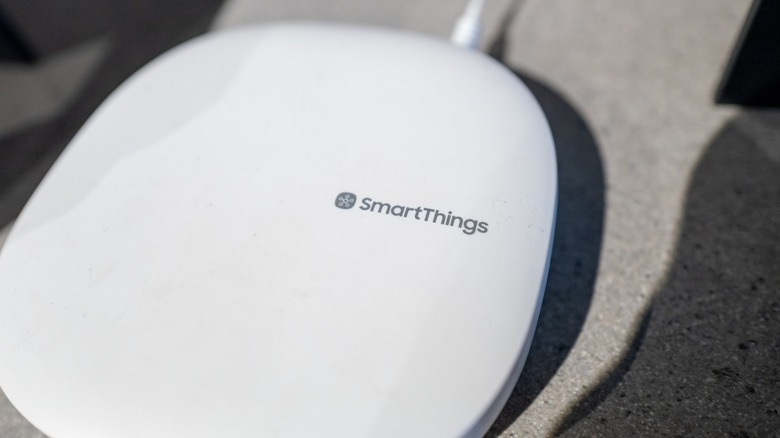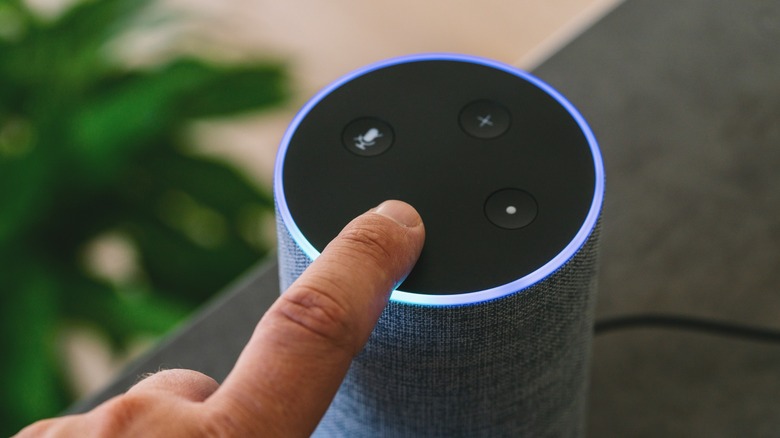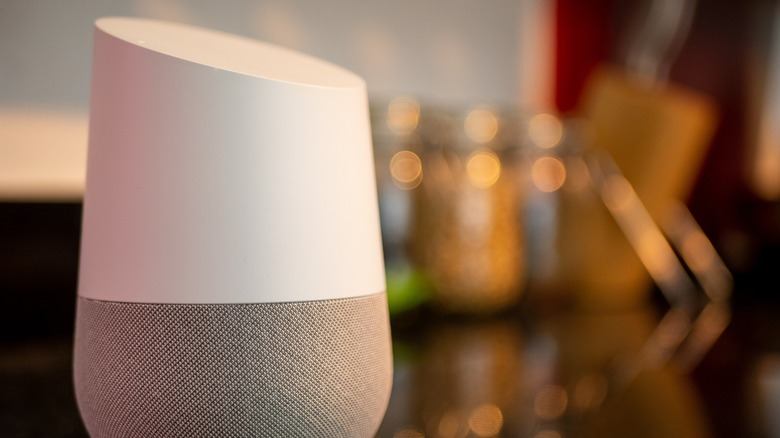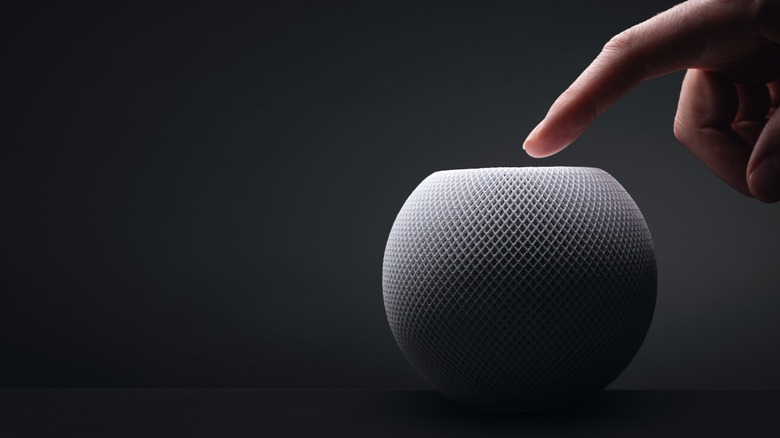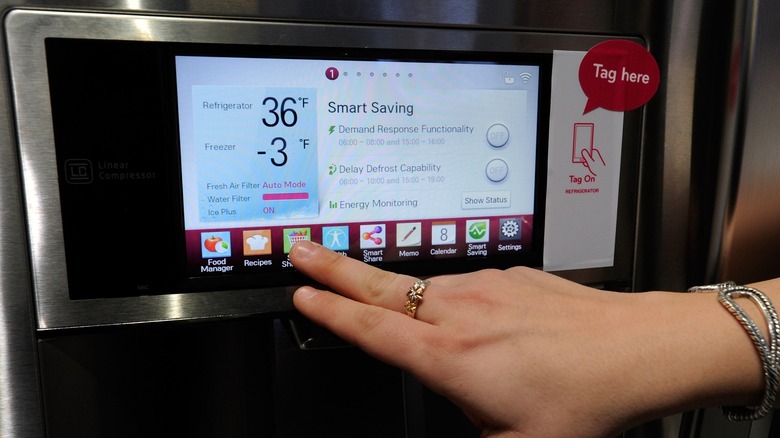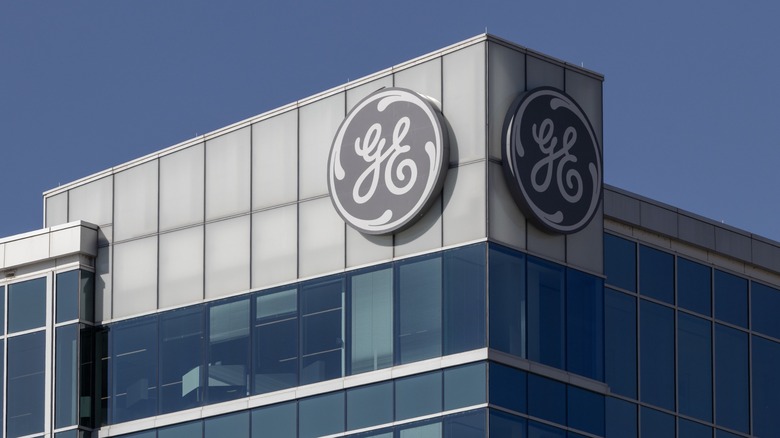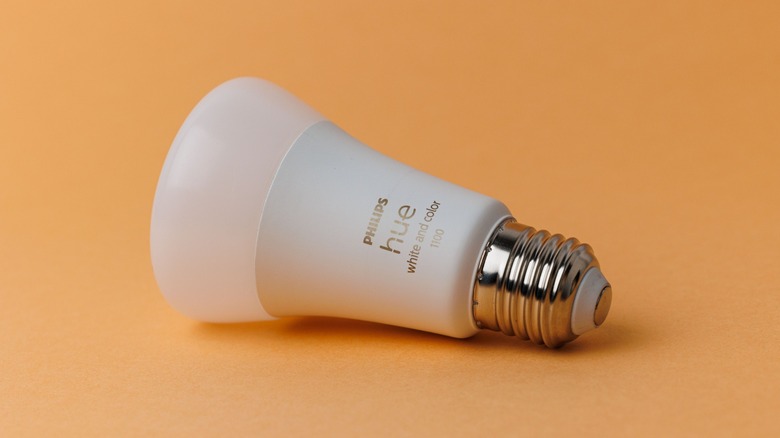7 Tech Brands That Also Make Smart Home Devices & Appliances
We may receive a commission on purchases made from links.
As homes across the United States embrace the "smart" renaissance, they're guided by pioneers of the industry. A Google search for "smart devices" will bring up a host of unfamiliar names and a few, like Yale or Nest, you may have come across. However, they all live in the shadows of billion- and trillion-dollar tech companies that have shifted from general consumer technology and electronics to help homeowners feel more comfortable in the smart home space.
Though we may have once turned to them for mobile phones, basic gadgetry, and feature-light appliances, these tech companies have stepped it up recently. Whether they've released a line of home conveniences, developed an entire network of interconnected devices, or upgraded their older offerings to help you navigate the day-to-day, their focus has shifted from the devices of yesteryear to smart home tech.
As you turn your home into a connected space of convenience, you'll come across these seven highly recognizable names and their suite of smart technology.
Samsung
Samsung is one of those do-all tech companies, with its grip firm around large appliances, mobile devices, home entertainment, computers, and even automotive technology. The company launched in 1969 with its first black-and-white television and quickly evolved throughout the 1970s and 1980s into the electronics conglomerate we know today. In fact, Samsung actually beat Apple to the smartphone market with the oft-forgotten 2001 release of the Samsung SPH-1300.
As for smart home integration, that all developed significantly in 2014 with the unveiling of Samsung Smart Home, a service designed to connect all of the user's smart home appliances, televisions, and smartphones. Samsung Smart Home ultimately evolved into SmartThings, an app designed to connect all of your smart home products, even beyond Samsung's line of smart devices.
While SmartThings used to include devices like cameras and smart outlets, it's now primarily focused on connecting to third-party smart products and elevating Samsung's new line of AI-powered appliances. From laundry units to microwaves, ranges, robot vacuums, and refrigerators, Bespoke AI is simply the next evolution of Samsung's smart home integration.
Bespoke AI officially launched in April 2024 with an initial lineup that includes an all-in-one washer/dryer, four-door refrigerators, gas ranges, and a sleek edge-to-edge microwave.
Amazon
It may have started as an online book retailer when it launched in 1995, but Jeff Bezos' vision evolved with the launch of AmazonBasics in 2009. Under the new label, the online retailer expanded into low-cost tech components, eventually offering things like computer mice, audio video cables, and phone chargers.
In November 2014, Amazon took its first step into the smart home market with Amazon Echo and the accompanying Alexa voice assistant. At the time, Echo was posed as a speaker you could talk to, and it wasn't quite the interconnected device users know it as today. Alexa could answer basic questions, build lists, and run simple skills.
Though Amazon only released its first smart home hub, the Echo Hub, in 2024, it had already been selling smart components that connected seamlessly via each version of the Echo device. Since the Echo has integration with major smart home automation brands like Ring and the brands on this list, Amazon didn't really need a big line of smart devices. It does, however, have two: the Smart Plug to voice control virtually any device connected to your wall outlet and the Smart Thermostat.
Launched as a search engine platform in 1996, Google is one of America's greatest success stories. One of its first biggest expansions came in 2004 with the release of Gmail. After 12 years of successes and failures — which included creating YouTube, acquiring Android OS, closing Google+, and developing a line of smartphones and smartwatches — Google made a splash in the smart home market when it revealed its answer to Amazon's Echo smart speaker.
Google Home had all the same basic features as Echo, including task management and a dedicated voice assistant. However, it wasn't the end of the company's move into smart home automation. Ten years later, Google acquired Nest Labs, a creation of two former Apple engineers. Though Nest Labs started in 2010 with a learning thermostat, Google evolved the brand into a full-fledged line of smart home devices.
Along with the updated Google Nest hub and improvements to Nest's original thermostat and smoke/CO detectors, the Nest line includes smart door locks, cameras, doorbells, and the Chromecast streaming stick with smart home control.
Apple
When Steve Jobs, Steve Wozniak, and Ronald Wayne first founded Apple in 1976, it was a company dedicated to home computers. It didn't stray from personal computing for over 20 years, but when it did, it revolutionized how we listened to music and, eventually, how we communicated.
After ultimately altering the mobile market forever with the introduction of the iPhone in 2007, it took Apple another seven years before it touched on smart home automation with the HomeKit API. While this allowed Siri to connect with third-party smart home products, the company didn't develop its own device until the HomePod in 2017. Another smart speaker, HomePod, was quite similar to Google Home and Amazon Echo, but it was a step towards a bigger picture.
While Apple initially discontinued the HomePod, a second generation was released in 2023, with even more integration with the user's established smart home. Though Apple doesn't sell its own branded smart home devices beyond the HomePod, HomeKit, the iPhone, and Apple's speaker can work together to connect with a wide variety of already-available devices from companies like Philips, Sengled, Logitech, and SwitchBot, allowing you to create an extensive ecosystem of smart home technology without being restricted to one company.
LG
Initially launched as Goldstar in 1958, LG's first product was not among the appliance lines it's known for today. Instead, in 1959, Goldstar introduced Korea's first homemade radio. Within a year, Goldstar released its second consumer product, a 12-inch fan. Before officially transitioning to the LG name, the company produced the first domestic refrigerator, introduced Korea to its first 19-inch black and white TV, and developed a room air conditioner.
LG moved into the smart home market a little sooner than other brands, introducing a line of appliances at the Consumer Electronics Show in 2013. Early iterations of smart technology were seen in LG's 2011 release of the Roboking Triple Eye robot vacuum, but the 2013 announcement added new appliances, including connected refrigerators and laundry units.
LG's big move into the smart home space was with 2015's SmartThinQ Hub, another smart speaker complete with voice automation. The hub allows the user to more easily control SmartThinQ-branded appliances, such as the air conditioners and refrigerators announced months prior to the Hub's reveal.
In 2017, LG evolved its smart home branding into ThinQ. The new branding emphasizes AI-powered appliances, allowing users full control of their new LG refrigerators, ranges, dishwashers, and more. From diagnosing mechanical errors to providing usage reports, ThinQ innovated virtually all aspects of the household.
Generic Electric
Conceptualized in the early 20th century, General Electric spent years revolutionizing the consumer kitchen with the first airtight refrigerator, the first sink-attached garbage disposal unit, the first front-loading single-rack dishwasher, the first double oven range, and the first two-door fridge-freezer combo.
Hints of GE's first smart technology crept into its consumer line with Nucleus (2010), a device designed to provide homeowners updates about their electricity use. One year later, this developed into its Brillion technology, which allowed appliances to determine and automatically run during off-peak electricity periods. Its first real step into smart home automation came in 2013, though, with the first wall oven that could be controlled via a smartphone.
From Aros, the phone-controlled air conditioner, to the first interconnected IFTTT appliances released in 2016, GE continued to enhance its smart home technology. In 2017, it launched its SmartHome Solutions team, which was dedicated to finding new consumer-friendly innovations to continue elevating the company's smart home appliances. Three years later, SmartHQ became the ecosystem for all of GE's Wi-Fi-enabled appliances, while GE Lighting innovated its smart lighting options with hub-free smart switches and a battery-powered dimmer and motion sensor.
Today, GE offers a range of small and large smart appliances, including the GE Profile Smart Mixer with Auto Sense, GE Profile Smart Ovens, and refrigerators and microwaves that can be controlled through the company's SmartHQ app.
Philips
Founded in 1891, Philips (then Philips & Co.) first became known for its cost-efficient incandescent light bulbs. While still a leader in home lighting today, throughout the 20th century, the brand shifted into other consumer categories with innovations like the Philishave electric razor, the first mass-market television, the first compact cassette player, and the first VCR.
Though Philips is still known for its personal care products, small appliances, and audio and visual applications, its biggest contribution to smart home technology was Philips Hue. Released in 2012 as part of a partnership with Apple, Philips Hue was the first iOS-controlled integrating lighting system.
The app and accompanying LED smart bulb allowed users to create lighting scenes, customize color palettes, and automate their lighting schedule as a means of home security. Hue's introduction was a three-pack of LED bulbs, but its library of Wi-Fi-enabled, versatile bulbs and devices has grown significantly since.
Lightstrips, lamps, dimmer switches, smart sensors, smart plugs, and a sync box that turns home theaters into dynamic lighting displays all connect with Philips' Hue bridge to help users automate the essentials in their homes. In 2023, the brand continued to show its dedication to home automation and safety with a line of smart home cameras.
